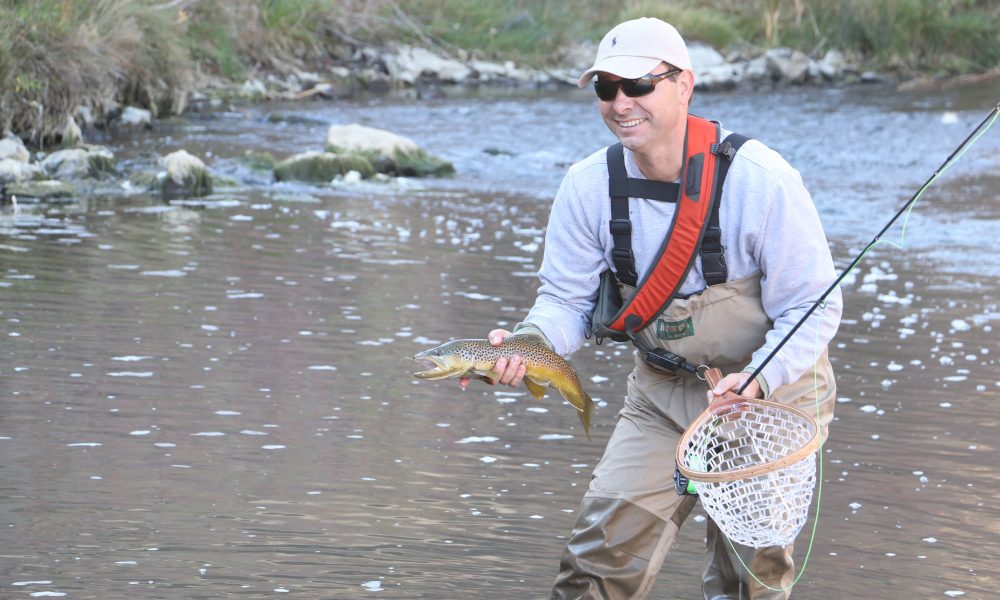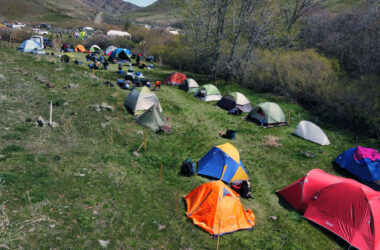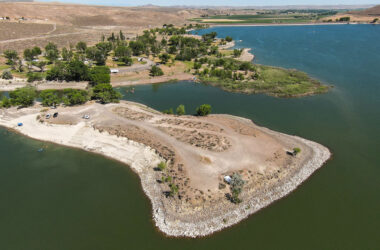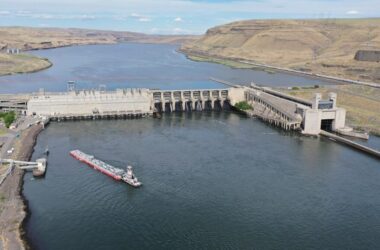VALE – The Oregon Department of Fish and Wildlife has lifted fishing limits in Malheur Reservoir and along the Malheur River from Namorf Dam upstream through Warm Springs Reservoir to the Highway 20 bridge.
Many Malheur County reservoirs have been hit hard by the three-year drought in southeastern Oregon. Fish and Wildlife has stocked trout in many smaller reservoirs and lifted fishing limits so anglers can take advantage of the opportunities before fish are threatened by the low water levels or temperatures too high for survival.
There are no limits on size, number, or gear used in such locations, the state agency declared on Wednesday, June 22.
“Unfortunately, these fish are just going to have nowhere to go when the water’s gone,” said Kirk Handley, assistant district fish biologist. “We want to try to give anglers a chance to harvest some of those fish before we get to that point.”
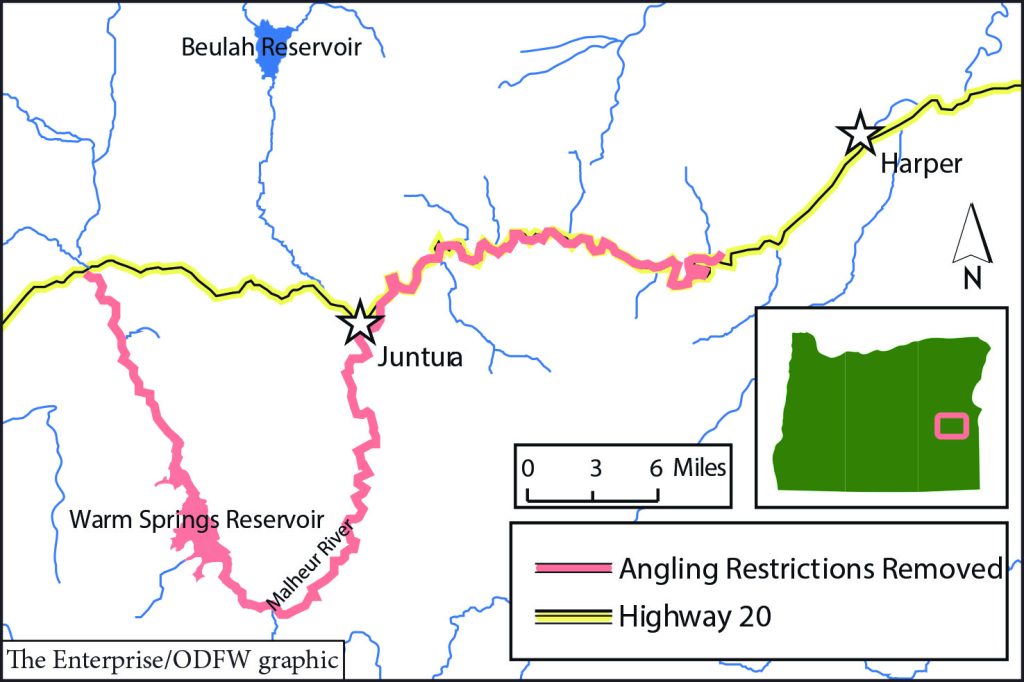
Handley said that when water levels in the reservoirs drop, fishing regulations are lifted before the rest of the water is drawn out for irrigation. Warm Springs Reservoir is at only 12% capacity, the lowest in the county, and as summer wears on it’ll be far too low for almost fish to survive.
“We did get snow accumulation and precipitation in mid-April, which held off some effects,” said Scott Oviatt, snow survey supervisor for the federal Natural Resources Conservation Service.
Because of the drought, snowpack levels this year were still far below typical levels.
“We need above-normal snowpack and precipitation to get back to normal reservoir water levels,” said Oviatt. “Normally this time of year, our runoff would be occurring. It’s pretty much over already.”
The runoff that contributes to the reservoirs also provides the much-needed cooler water that trout and other fish need to survive. As air temperatures creep into the summer highs of the 90s and 100s, river and reservoir temperatures go up as well.
“Without the cooler restocking of the stream flows, it stresses the populations,” said Oviatt.
Fighting drought is a balancing act in overcompensation for years of low water levels, to return to normal Oregon needs particularly wet falls and winters.
“In portions of northeast Oregon, it did help. They are out of the drought. In the southeastern part of the state, it’s a too-little-too-late kinda situation,” said Oviatt.
In the meantime, Fish and Wildlife officials will monitor water levels in the county’s water bodies and make changes as needed to fishing regulations.
“Summer, right now, is prime for fishing,” said Adam Tolman from Malheur Drug in Vale. Malheur Drug is a popular tackle stop for anglers headed toward the Malheur River and Warm Springs Reservoir.
Depending on the needs of local irrigation districts and the reservoir water levels, Handley, said there’s a possibility that fishing regulations will be lifted at other county reservoirs such as Bully Creek.
Handley recommended that fishermen get out there before it gets too hot and while the fish populations are still thriving even with low water levels.
News tip? Contact reporter Mac Larsen at [email protected]
EXCELLENCE IN JOURNALISM – Available for $7.50 a month. Subscribe to the digital service of the Enterprise and get the very best in local journalism. We report with care, attention to accuracy, and an
unwavering devotion to fairness. Get the kind of news you’ve been looking for – day in and day out from the Enterprise.

